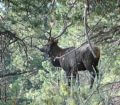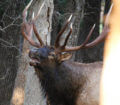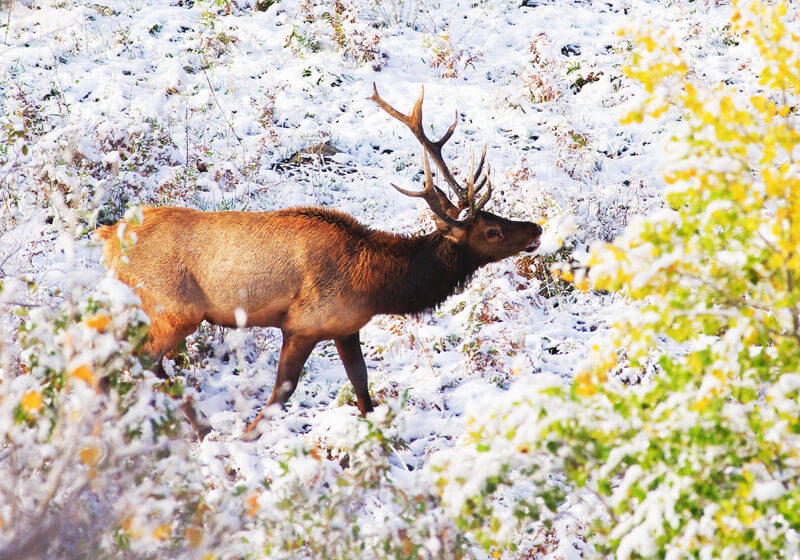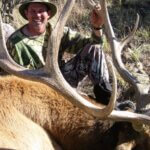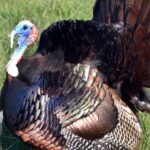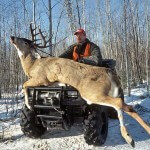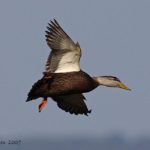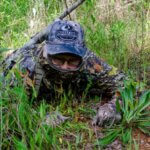Editor’s Note: Prior to the European settlement of the U.S., more than 10-million elk lived in most of the U.S. and parts of Canada. Today about 1-million elk live in the western U.S., Wisconsin, Michigan, Minnesota, Missouri, Pennsylvania, Arkansas, Kentucky, Tennessee, Virginia and North Carolina as well as sections of Canada. Elk live in a variety of habitats, from rain forests to alpine meadows and dry desert valleys to hardwood forests. Since elk season starts in some of these states in August, John in the Wild wanted to give you the latest information on preparing to hunt elk. Chad Parsons from Laramie, Wyoming, has been hunting elk for 11 years. Hunting elk was always on Chad’s bucket list. But until he moved from western North Carolina to Wyoming, he never had had an opportunity to fulfill that dream.
My wife, Rena, and I moved to Wyoming 12-years ago for a new job opportunity for me. Before I moved here, I always had thought of elk hunting as a dream hunt – something I might not ever get to do, but something I always wanted to do. So, as soon as I got an opportunity to hunt elk, I went after them. Unfortunately, I didn’t have a mentor to help teach me how to hunt elk. I just started hunting elk. I thought I would learn as I began to hunt them.
 Today between Rena and me, we’ve taken 11 cow elk and five bulls. Rena and I really like to hunt together. It’s a rare hunt when she’s not with me, or I’m not with her. I know some people who don’t live out here more or less turn their noses up at harvesting cow elk. However, there are two reasons that Rena and I always try to get one cow elk for the freezer. Elk are much like deer. To keep a healthy herd, some of the reproductive segment of the herd (the cows) has to be taken each year. The other reason is that elk meat is fine tablefare. So, we don’t hesitate to take a cow.
Today between Rena and me, we’ve taken 11 cow elk and five bulls. Rena and I really like to hunt together. It’s a rare hunt when she’s not with me, or I’m not with her. I know some people who don’t live out here more or less turn their noses up at harvesting cow elk. However, there are two reasons that Rena and I always try to get one cow elk for the freezer. Elk are much like deer. To keep a healthy herd, some of the reproductive segment of the herd (the cows) has to be taken each year. The other reason is that elk meat is fine tablefare. So, we don’t hesitate to take a cow.
I’m often asked, “What’s been the most-difficult part of your elk education?” My answer always is learning how, why, when and where the elk travel, bed and feed, and what you can and can’t do when you get close to elk. An elk will travel 5-6 miles in a day. So for me, just finding elk to hunt and learning how to stay with them throughout the day in hopes of getting a shot were my biggest learning challenges. When I walked out into the mountains and decided I was going to be an elk hunter, I had to learn the habits of an elk and the type of forage they liked to eat.
The farthest I ever took an elk from an access road was 5-1/2 miles, and we covered that 5-1/2 miles on foot. We didn’t use ATVs or horses. We just used our legs to find the elk. To get to the spot where I took that elk at 9:00 am one morning, Rena and I had to travel in the dark. I took that elk with a rifle at 80 yards, but that was the easiest part of the hunt. To get the elk field dressed and boned-out took us from 9:00 am until 12:00 noon. Luckily, on this hunt, we had our pack frames and a tarp to pack the elk out. We had scouted enough to find the herd before the hunt, and we had planned to take an elk. So, we took all our equipment in with us to butcher the animal if and when we got him.
I highly recommend that if you intend to take an elk, and you’re hunting on your own, that you carry a tarp and frame pack with you. We used the tarp to lay the boned-out meat on, once we removed the meat from the bones. Not only did we carry out the meat but also the head, hide and antlers. We only made one trip from the spot where we butchered the elk back to our truck. Loaded with meat and elk, my pack was pushing 200 pounds. Rena’s pack weighed about 100 pounds. We wanted to make only one trip because the day was really hot, and we didn’t want the meat, the head or the hide to spoil.
We covered that 5-1/2 miles by making about 20 different rest stops. After the first mile, we learned that if we sat down on the ground, we probably wouldn’t be able to get up. We needed a place to take the weight off our backs and hips without sitting all the way down and removing the pack. So, we didn’t stop until we found a rock or a log where we could sit and rest the pack on, without having to take the pack off. We didn’t arrive at our truck until 6 pm that afternoon. I think I was more excited about arriving at the truck with our packs than I was about taking the elk. The frame pack is the key to carrying heavy loads in and out of the wilderness. We use ALPS Commander Freighter frame packs (http://www.alpsoutdoorz.com/products/packs/hunting-packs/commander-pack-bag). These packs help put the weight that you’re carrying on your hips, instead of on your back and shoulders. By putting the weight in the middle of your body, you’re much more stable when you’re climbing uphill or walking downhill. Rena and I use both the sternum strap and the weight strap to keep the weight in the centers of our bodies.
Over the years, I’ve learned to always carry field-dressing equipment with me when I go elk hunting, because I never know where and when I’ll have an opportunity to take an elk. However, don’t be overly concerned about how you’re going to get the elk out, until after you’ve taken one. I carry three knives with me. One of my knives is a Havalon (www.havalon.com) – a fold-up knife that has replaceable scalpel blades. So, when one blade gets dull, I quickly and easily can change blades.
If you’ve read articles or books on elk hunting, or watched elk-hunting shows on TV or YouTube, most of the elk-hunting guides and noted hunters will say you must be in shape to go elk hunting. They’re mainly talking about being in shape for hiking up and down mountains. But the truth of the matter is, you also need to be in shape to carry your animal out – if you’re hunting on foot, and you don’t have a pack string, an ATV or a 4-wheel drive vehicle to carry your meat out from the kill site.
On this hunt after hiking 5-1/2-miles, we had about a 3-mile ride from where we’d left our truck back to our elk camp. When we arrived at camp, we hung our meat up in the trees, since the nighttime temperature was about 42 degrees, which was cool enough to keep the meat from ruining. After taking care of our meat, we slept about as soundly as an elk hunter can sleep. When I tell this story, people often ask me, “What would you have done differently on this hunt, if you’d known you would have to carry that much meat, head and hide out?” I smile and answer, “I’d take a strong buddy with us.”
To learn more about hunting elk by getting John E. Phillips’ Kindle, print and Audible books, go to http://amzn.to/17ENNqK. To get John and Denise Phillips’ free cookbook, “Miz Denise’s Outdoor Cooking: More than 35 Recipes for Elk and Mule Deer,” go to https://johninthewild.com/free-books.

